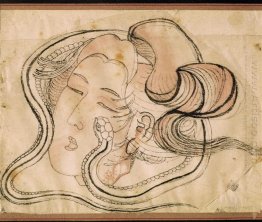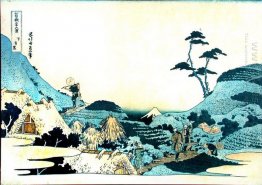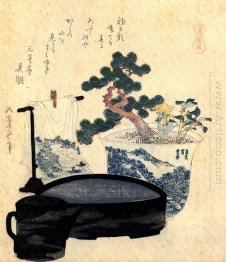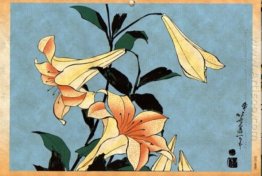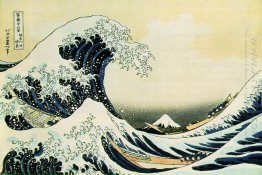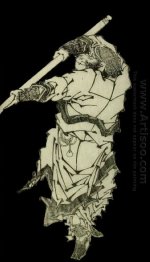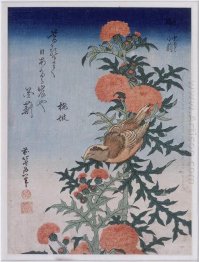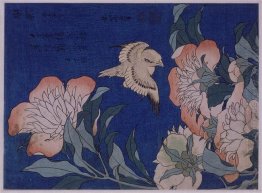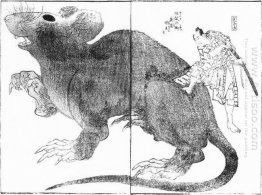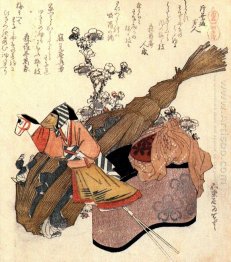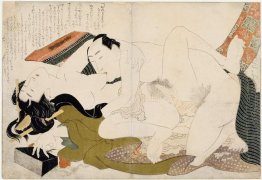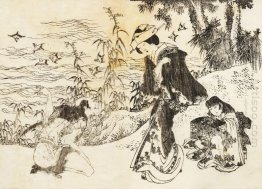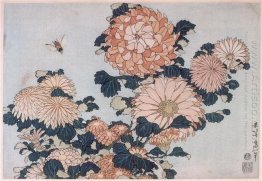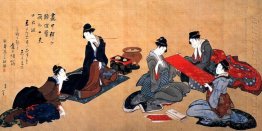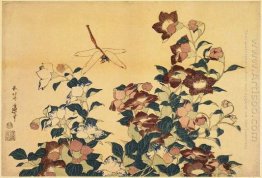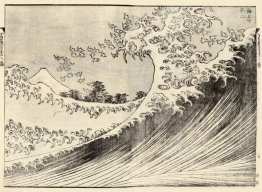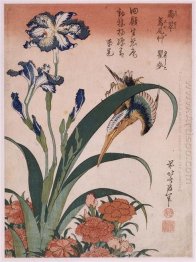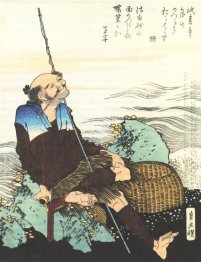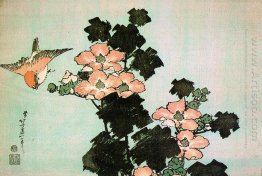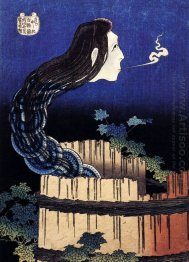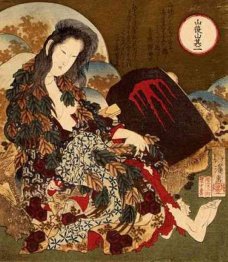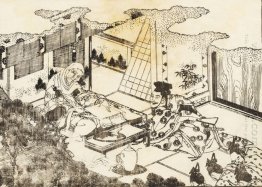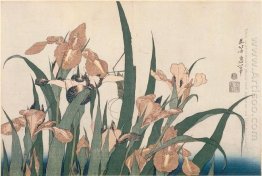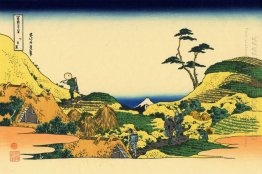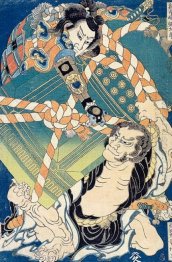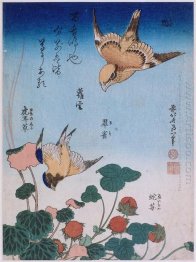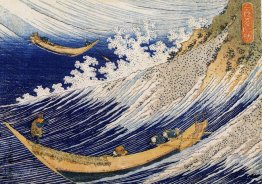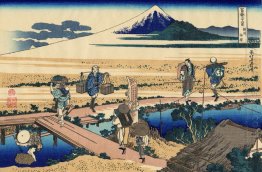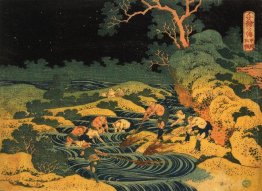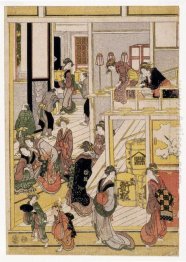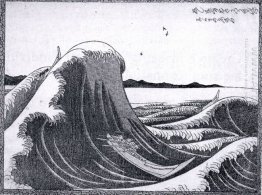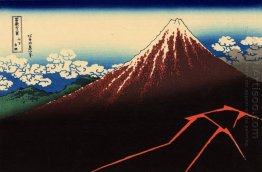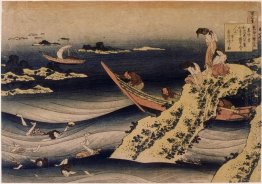Katsushika Hokusai

Katsushika Hokusai was a Japanese painter and printmaker from the Edo Period. He is most famous for his series of prints called "Thirty-Six Views of Mount Fuji" (produced during the period 1826-1833). One of these views, "The Great Wave Off Kanagawa," has become a modern-day icon. Hokusai's seemingly timeless images are almost 200 years old.
From his early beginnings as a student of Katsukawa Shunshō, Katsushika Hokusai began to master the art of Ukiyo-e, the Japanese art of wood block prints. These prints commonly depicted famous players in theater and popular landscapes. It was then he was given a new name, the first of his name changes of his artistic career. During this time as an apprentice he also married for the first time. Very little information is known about his first wife except that she died in the early 1790s.
When Katsukawa Shunshō died in 1793, Katsushika Hokusai began experimenting with different kinds of art popular in Europe during that time. This form of art is later what led to his fame, but also got him expelled from the studio of Katsukawa Shunshō from his chief disciple. The images of his artwork had changed from that of popular courtesans and actors to daily life of the Japanese people and common Japanese images and landscapes. His medium changed to brush paintings instead of wood blocks, and thus beginning the height of his career, as well as another name change.
Over the next decade, Hokusai gained increasing fame both because of his skill as an artist as well as his knack for self-promotion. It was said that he created a portrait of a Buddhist monk for a Tokyo festival which was over 600 feet long using brooms and buckets of ink. He was also placed in the court of the Shogun Iyenari for a competition with another local artist at the time where he was said to have won. In the court of the Shogun, he was able to learn the art of other types of brushstrokes and attract other students of art to learn his techniques. He was also paired with a writer during this period to create illustrated books. This form of art in the illustrated books has evolved into what we know now as the types of caricatures used in comic books today.
While Hokusai contributed to the art of comic books, he is most popularly known for his ukiyo-e print series 36 views of Mt. Fuji, originally released with 36 prints. Ten more were added after original publication. 36 views of Mt. Fuji is actually 46 prints. This publication was followed by 100 views of Mt. Fuji, which is deemed as the masterpiece of his career. His landscape picture books are deemed masterpieces among many as they turned the focus of artwork at the time from courtesans and popular actors to landscapes detailing plants, people, animals, and mountains.
In 1839, within a year of Hokusai’s death, a great fire destroyed his studio, and with it many of his life’s works. At this point in his career, his popularity had already begun to wane as he was replaced with other budding artists with different styles. He still continued to paint and improve in his craft until his death. He was quoted on his deathbed saying that if heaven would just give him ten more years, even just five more years, then perhaps he could become a real painter. He died on May 18, 1849, and was laid to rest in his native city of Tokyo.






